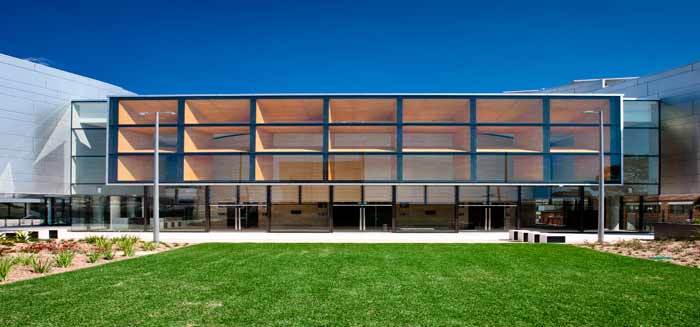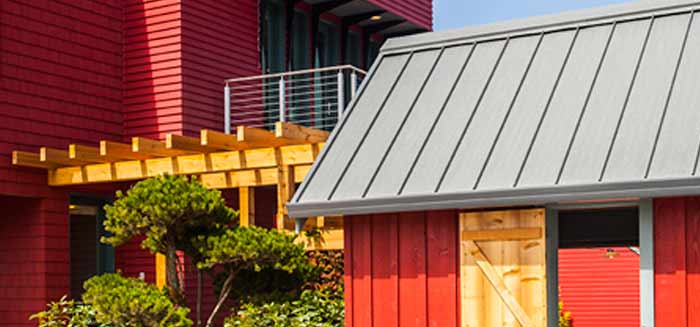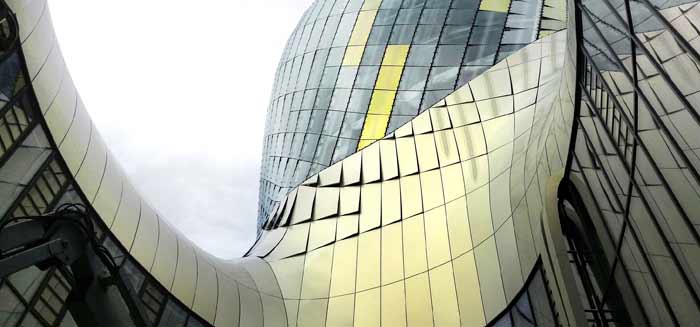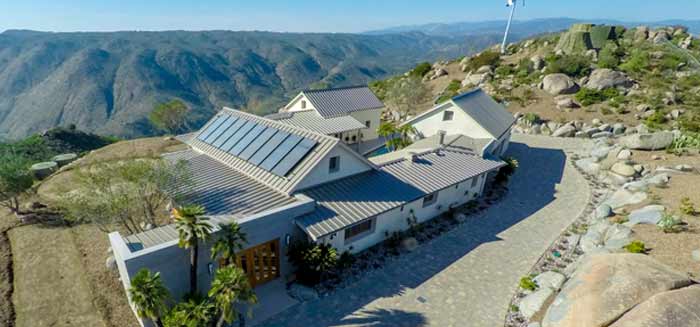
Architects, manufacturers, and consumers appreciate the beauty of coil-coated metal, including consistent quality, low cost, design flexibility, and green properties.
Architectural paneling, appliances, building materials, signs, and displays can become awe-inspiring objects of beauty with laminate films applied with the coil coating process. The look of stainless steel, brushed copper, wood grains, and even color changing pigments can be achieved using prepainted metal.

Prepainted metal products are amazingly durable. With the appropriate surface treatments, prepainted steel and aluminum can be made virtually:
All of this helps ensure a long service life without degradation.
Related Resources:

Prepainted metal enables product designers, architects, and manufacturers to reinvent products of all types. Innovative shapes, colors, patterns, textures, and specialty coatings are all possible with prepainted metal.
Prepainted steel and aluminum can be used for walls, roofs, floors, and more, producing buildings with both function and beauty. From micro-housing to mega-factories, prepainted metal can add that “wow” factor to architecture.
Manufacturers of the most advanced green building materials and renewable energy products rely on coil coating technology. For solar panels, coil coating is used to apply coatings to aluminum strip for these thermal energy applications. Thousands of wind energy plants across the globe use wind turbines that are coated with coil coating technology. Pearlescent pigments with infrared-reflective coatings technology are applied to building panels with the coil coating process, improving energy efficiency.
Related Resources:

Unlike brick, cement, wood, and many other building materials, prepainted metal can be recycled without loss of quality. Aluminum and steel continually recover their original performance properties, even after multiple times of recycling, allowing them to be used again and again. In fact, about 95% of the prepainted metal that is used in buildings are collected and recycled after they have served their purpose. By contrast, the performance characteristics of most non-metallic materials degrade after recycling, resulting in a loss of strength, durability, and aesthetic appeal.
Click on image above to enlarge
The coil coating process itself is an environmentally responsible method to apply paint to steel and aluminum substrate. Consider the following about the coil coating process:





The coil coating process is an efficient, effective, and environmentally friendly way to pre-clean, pre-treat, pre-prime, and pre-paint metal.
Costs to be considered with in-house paint shops include labor costs, inventory costs, fixed paint equipment costs, and operating costs (including costs associated with EPA compliance and reporting.) All of these costs are reduced or eliminated when the painting process is outsourced to a coil coater.
The National Coil Coating Association offers a Cost Comparison Analysis form to help manufacturers understand the long-term savings in converting to coil coated metal. Get the Cost Comparison Form FREE here. We recommend that you review the form with a coil coating industry representative to better understand the costs, so you can make a fully informed decision.